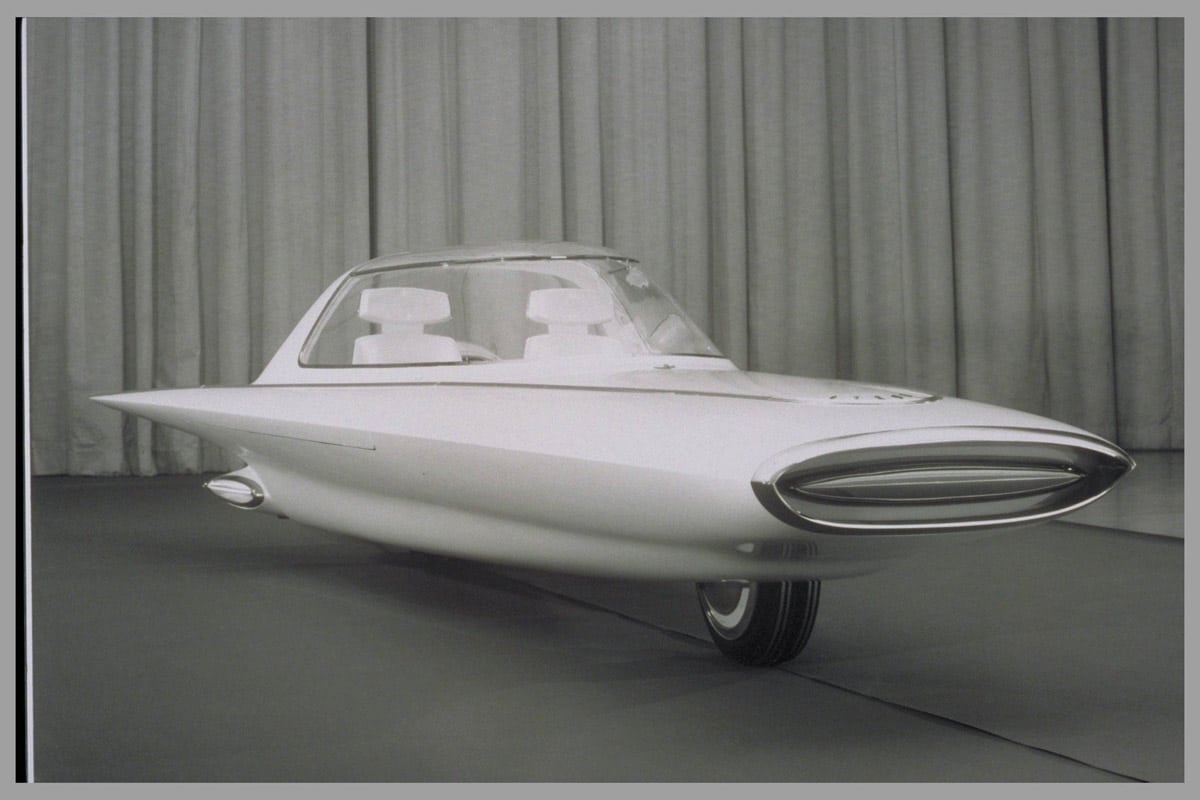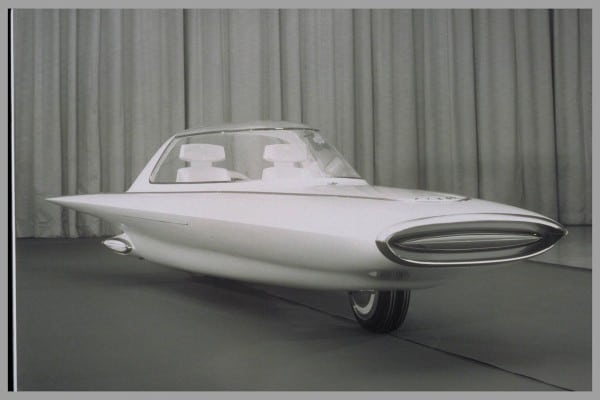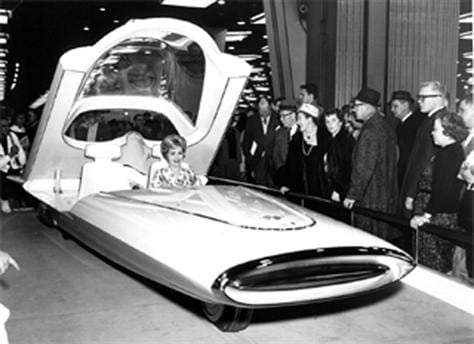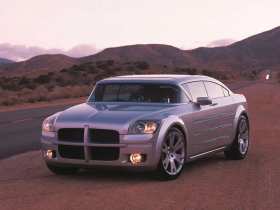In 1961, at the Detroit Motor Show, Ford introduced a concept that was little more than a scale model, but that instantly became a smash hit in magazines and as a showpiece for the company. The Ford Gyron was more than just another futuristic concept, it was one that predicted many things coming to automotive and was so out-of-the-box that it demanded notice.
The Gyron was a wild concept that could only come from two inspirations: the science fiction-wild 1950s and the mind of an engineer whose career included building flying saucers for the military. The Ford Gyron was a combination of the design prowess of Syd Mead at Ford and former U.S. Air Force mad scientist Alex Tremulis, who each brought their half of that two-part inspiration that made the Gyron what it was.
The Design of the Ford Gyron
If you know Syd Mead, you know that he’s been the backbone of a lot of sci-fi cult classics and the father of the term “I’ve called science fiction ‘reality ahead of schedule’.” He is one of the most influential people on modern science fiction visuals and so it’s no coincidence that his hand is behind one of the most science fiction-to-reality cars in automotive history. If you look closely at the Ford Gyron, you might see hints of Tron.
Working with Mead was another mad scientist type named Alex Tremulis, whose career spanned basically every automotive company in the United States, from Cord to GM to Duesenberg and, of course, Ford. He’s the guy who gave the Tucker it’s third headlight, instantly becoming a legend. Before all that, in 1941, he joined the U.S. Army Air Corps (which became the Air Force) where he was stationed at Wright Field (now Wright-Patterson AFB) and was the primary designer behind the Dyna-Soar, one of the first actual studies of space vehicles, and conceptualized extraterrestrial life forms and their transportation were they to come to earth. During this time, he worked with ideas conceived by Louis Brennan, whose gyroscopic theories would eventually change the world. Or at least make Segway scooters possible. Suddenly Area 51 sounds a little less nuts.
It was that combination that created the Ford Gyron.
The Gyron is basically a motorcycle with a sleek car’s body. Today, of course, this is not exactly new. Except the Gyron was on two wheels, like a motorcycle, not three, like other motorcycle-cum-car concepts. It was balanced not by the driver and rider, which the concept also sort of blurred, but by gyroscopes.
The theory was simple: when in motion, the car stayed upright thanks to those gyroscopes. When stopped, little landing gear struts dropped down to put tiny wheels on the road to hold its balance. In reality, it just looked really cool and didn’t really do any of those things since it didn’t have an engine, nor did it have functioning gyroscopes.
What it did have was a lot of what today’s publicists like to call “wow factor.”
The car was more than just futuristic, it was ultra-futuristic, even to the point of being uber-future. It went beyond Buck Rogers and Flash Gordon and straight into Star Trek – before Spok was even conceived.
The concept included space-age, jet-like design features that gave it the impression that it was gliding rather than driving. The two-seat cockpit was underneath a dome of glass that functioned as windscreen, side windows, roof, and door. Just standing still on show in Detroit, the car gave the impression it was floating and could putter off with a Jetson’s-like pbbbbtttthhh at any time.
Future-looking Technology
 All that futuristic styling from Mead housed some pretty innovative ideas for 1961. Some of them were not exactly ground-breaking, though they weren’t yet common. This included a radio telephone (every futuristic car had to have one of these), fly-by-wire steering, a television-style console display, and a center console that housed the driving controls so that the car could be driven from either seat. Good luck filling out that ticket, officer.
All that futuristic styling from Mead housed some pretty innovative ideas for 1961. Some of them were not exactly ground-breaking, though they weren’t yet common. This included a radio telephone (every futuristic car had to have one of these), fly-by-wire steering, a television-style console display, and a center console that housed the driving controls so that the car could be driven from either seat. Good luck filling out that ticket, officer.
That driving configuration is one of the more compelling things about the Ford Gyron. It was a small dial, just about the right size to fit in your hand as a grip, that controlled direction by being turned and speed (or braking) by being pushed forward or back. Buttons ahead of it gave control over other things in the car as well, including a number pad for dialing out on the radio phone.
Today, fly-by-wire steering is nothing new, though we usually use a steering wheel to do it. Radio phones are now cell phones and everyone has one, even little kids that can’t even ride a bicycle. The TV console is now an LCD readout for the instrument cluster, backup camera, infotainment, and more – an idea the Tesla Model S takes to the extreme with its gigantic iMax-like center console.
Other things envisioned, though not functioning, in the Gyron included satellite navigation and automated highway systems for commuters.
The Gyron spawned toys, scaled model kits, and even made appearances in Hollywood. Although the idea of the Gyron and perhaps the retro-modern look of it are easy to poke fun at, the concept is compelling and keeps you turning back to look at it again. So while some might think it’s a little campy, the Ford Gyron is always going to be interesting. Interesting enough that a copy of the original sold at auction for $40,000 recently.
Where Is It Now?
The Gyron was never meant for production and was a showcase prototype only. Ford did toy with the idea of gyroscopes in vehicles a little and this concept was a key part of that conceptualization. Records are iffy, but the original Gyron (in white) was copied at least once into a rolling chassis for auto show use, with the original appearing at the Detroit and New York shows while the red copy made several automotive events in 1961 and ’62. The original was parked in the Ford Rotunda in Dearborn, Michigan and subsequently destroyed in the fire there in 1962.
The copy, however, was eventually purchased by Joe Oros, chief designer behind the original Ford Mustang, who kept it in his collection until last year. It went to auction at the Wright Auction House with an estimated take of $10,000-$15,000 and ended up fetching $40,000. The new owner prefers to remain anonymous.










